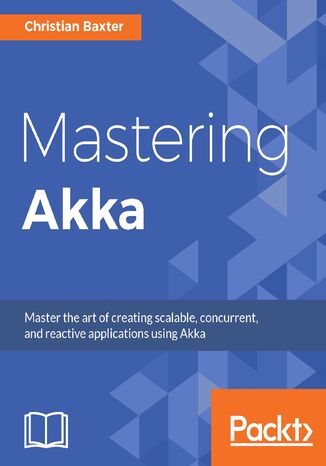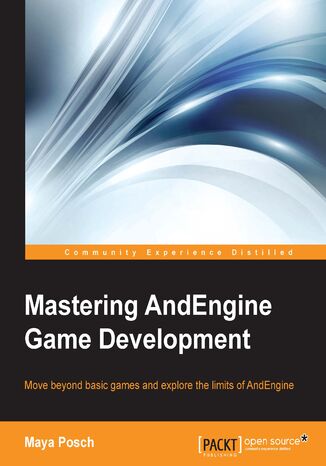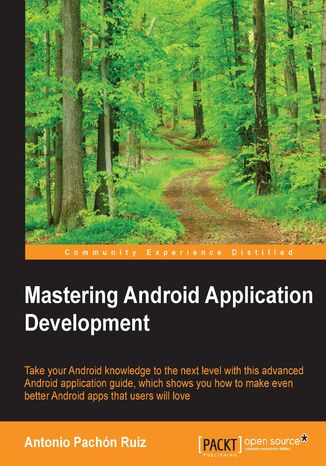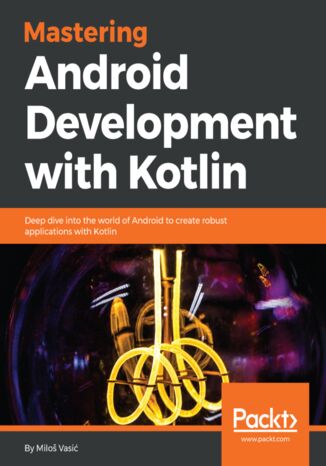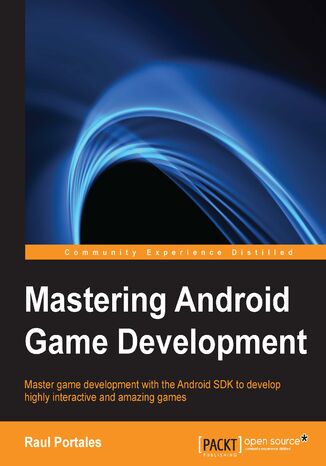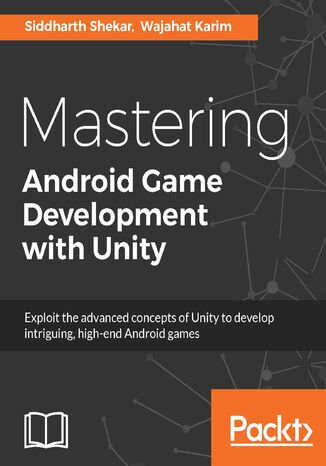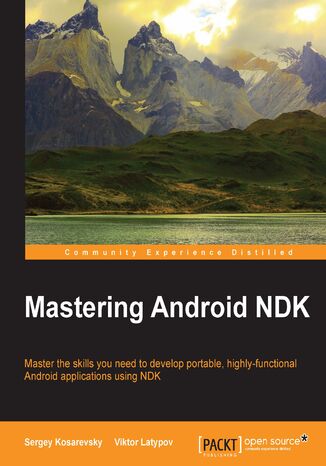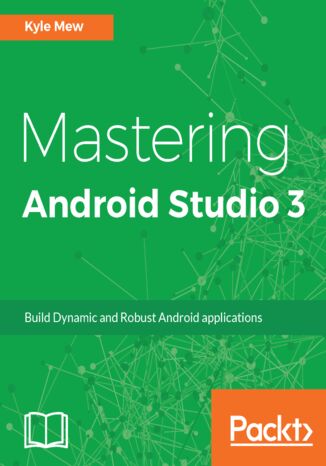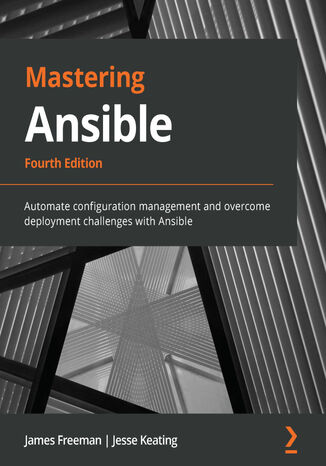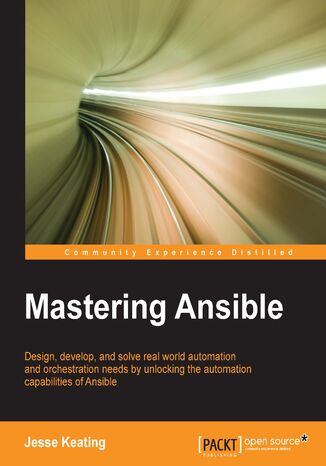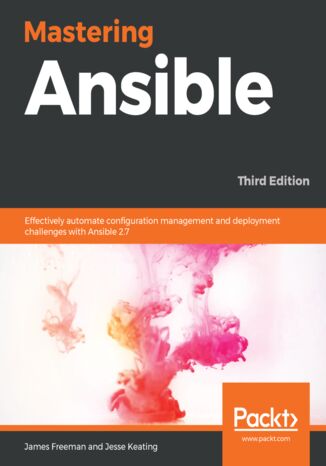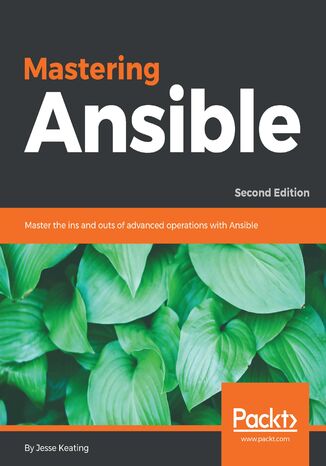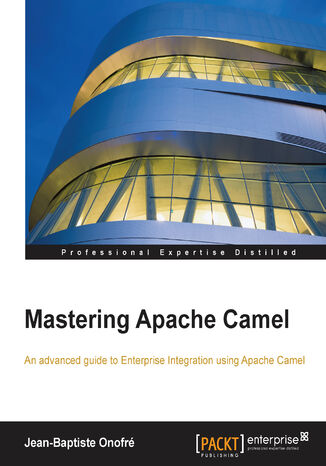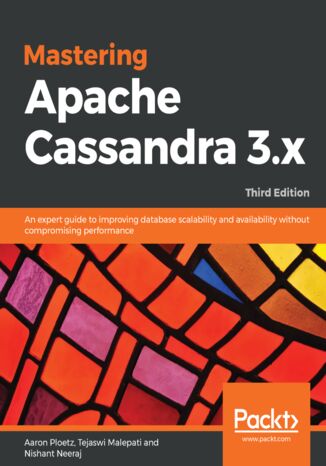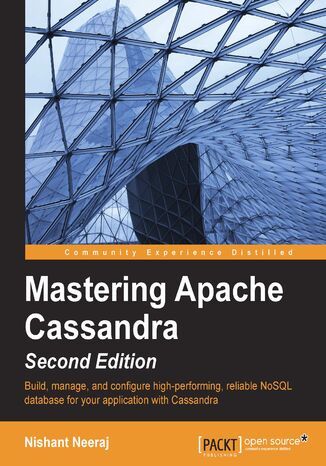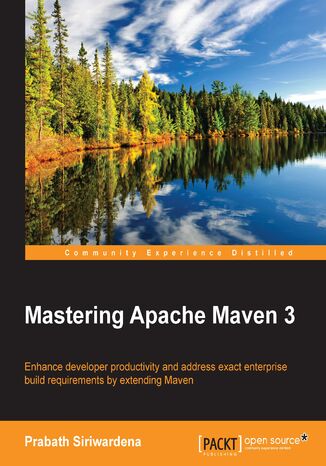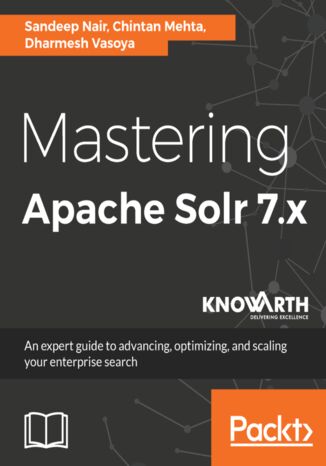Категорії
Електронні книги
-
Бізнес та економіка
- Біткойн
- Ділова жінка
- Коучинг
- Контроль
- Електронний бізнес
- Економіка
- Фінанси
- Фондова біржа та інвестиції
- Особисті компетенції
- Комп'ютер в офісі
- Комунікація та переговори
- Малий бізнес
- Маркетинг
- Мотивація
- Мультимедійне навчання
- Нерухомість
- Переконання та НЛП
- Податки
- Соціальна політика
- Порадники
- Презентації
- Лідерство
- Зв'язки з громадськістю
- Звіти, аналізи
- Секрет
- Соціальні засоби комунікації
- Продаж
- Стартап
- Ваша кар'єра
- Управління
- Управління проектами
- Людські ресурси (HR)
-
Для дітей
-
Для молоді
-
Освіта
-
Енциклопедії, словники
-
Електронна преса
- Architektura i wnętrza
- Безпека життєдіяльності
- Biznes i Ekonomia
- Будинок та сад
- Електронний бізнес
- Ekonomia i finanse
- Езотерика
- Фінанси
- Особисті фінанси
- Бізнес
- Фотографія
- Інформатика
- Відділ кадрів та оплата праці
- Для жінок
- Комп'ютери, Excel
- Бухгалтерія
- Культура та література
- Наукові та академічні
- Охорона навколишнього середовища
- Впливові
- Освіта
- Податки
- Подорожі
- Психологія
- Релігія
- Сільське господарство
- Ринок книг і преси
- Транспорт та спедиція
- Здоров'я та краса
-
Історія
-
Інформатика
- Офісні застосунки
- Бази даних
- Біоінформатика
- Бізнес ІТ
- CAD/CAM
- Digital Lifestyle
- DTP
- Електроніка
- Цифрова фотографія
- Комп'ютерна графіка
- Ігри
- Хакування
- Hardware
- IT w ekonomii
- Наукові пакети
- Шкільні підручники
- Основи комп'ютера
- Програмування
- Мобільне програмування
- Інтернет-сервери
- Комп'ютерні мережі
- Стартап
- Операційні системи
- Штучний інтелект
- Технологія для дітей
- Вебмайстерність
-
Інше
-
Іноземні мови
-
Культура та мистецтво
-
Шкільні читанки
-
Література
- Антології
- Балада
- Біографії та автобіографії
- Для дорослих
- Драми
- Журнали, щоденники, листи
- Епос, епопея
- Нарис
- Наукова фантастика та фантастика
- Фельєтони
- Художня література
- Гумор, сатира
- Інше
- Класичний
- Кримінальний роман
- Нехудожня література
- Художня література
- Mity i legendy
- Лауреати Нобелівської премії
- Новели
- Побутовий роман
- Okultyzm i magia
- Оповідання
- Спогади
- Подорожі
- Оповідна поезія
- Поезія
- Політика
- Науково-популярна
- Роман
- Історичний роман
- Проза
- Пригодницька
- Журналістика
- Роман-репортаж
- Romans i literatura obyczajowa
- Сенсація
- Трилер, жах
- Інтерв'ю та спогади
-
Природничі науки
-
Соціальні науки
-
Шкільні підручники
-
Науково-популярна та академічна
- Археологія
- Bibliotekoznawstwo
- Кінознавство / Теорія кіно
- Філологія
- Польська філологія
- Філософія
- Finanse i bankowość
- Географія
- Економіка
- Торгівля. Світова економіка
- Історія та археологія
- Історія мистецтва і архітектури
- Культурологія
- Мовознавство
- літературні студії
- Логістика
- Математика
- Ліки
- Гуманітарні науки
- Педагогіка
- Навчальні засоби
- Науково-популярна
- Інше
- Психологія
- Соціологія
- Театральні студії
- Богослов’я
- Економічні теорії та науки
- Transport i spedycja
- Фізичне виховання
- Zarządzanie i marketing
-
Порадники
-
Ігрові посібники
-
Професійні та спеціальні порадники
-
Юридична
- Безпека життєдіяльності
- Історія
- Дорожній кодекс. Водійські права
- Юридичні науки
- Охорона здоров'я
- Загальне, компендіум
- Академічні підручники
- Інше
- Закон про будівництво і житло
- Цивільне право
- Фінансове право
- Господарське право
- Господарське та комерційне право
- Кримінальний закон
- Кримінальне право. Кримінальні злочини. Кримінологія
- Міжнародне право
- Міжнародне та іноземне право
- Закон про охорону здоров'я
- Закон про освіту
- Податкове право
- Трудове право та законодавство про соціальне забезпечення
- Громадське, конституційне та адміністративне право
- Кодекс про шлюб і сім'ю
- Аграрне право
- Соціальне право, трудове право
- Законодавство Євросоюзу
- Промисловість
- Сільське господарство та захист навколишнього середовища
- Словники та енциклопедії
- Державні закупівлі
- Управління
-
Путівники та подорожі
- Африка
- Альбоми
- Південна Америка
- Центральна та Північна Америка
- Австралія, Нова Зеландія, Океанія
- Австрія
- Азії
- Балкани
- Близький Схід
- Болгарія
- Китай
- Хорватія
- Чеська Республіка
- Данія
- Єгипет
- Естонія
- Європа
- Франція
- Гори
- Греція
- Іспанія
- Нідерланди
- Ісландія
- Литва
- Латвія
- Mapy, Plany miast, Atlasy
- Мініпутівники
- Німеччина
- Норвегія
- Активні подорожі
- Польща
- Португалія
- Інше
- Przewodniki po hotelach i restauracjach
- Росія
- Румунія
- Словаччина
- Словенія
- Швейцарія
- Швеція
- Світ
- Туреччина
- Україна
- Угорщина
- Велика Британія
- Італія
-
Психологія
- Філософія життя
- Kompetencje psychospołeczne
- Міжособистісне спілкування
- Mindfulness
- Загальне
- Переконання та НЛП
- Академічна психологія
- Психологія душі та розуму
- Психологія праці
- Relacje i związki
- Батьківство та дитяча психологія
- Вирішення проблем
- Інтелектуальний розвиток
- Секрет
- Сексуальність
- Спокушання
- Зовнішній вигляд та імідж
- Філософія життя
-
Релігія
-
Спорт, фітнес, дієти
-
Техніка і механіка
Аудіокниги
-
Бізнес та економіка
- Біткойн
- Ділова жінка
- Коучинг
- Контроль
- Електронний бізнес
- Економіка
- Фінанси
- Фондова біржа та інвестиції
- Особисті компетенції
- Комунікація та переговори
- Малий бізнес
- Маркетинг
- Мотивація
- Нерухомість
- Переконання та НЛП
- Податки
- Соціальна політика
- Порадники
- Презентації
- Лідерство
- Зв'язки з громадськістю
- Секрет
- Соціальні засоби комунікації
- Продаж
- Стартап
- Ваша кар'єра
- Управління
- Управління проектами
- Людські ресурси (HR)
-
Для дітей
-
Для молоді
-
Освіта
-
Енциклопедії, словники
-
Електронна преса
-
Історія
-
Інформатика
-
Інше
-
Іноземні мови
-
Культура та мистецтво
-
Шкільні читанки
-
Література
- Антології
- Балада
- Біографії та автобіографії
- Для дорослих
- Драми
- Журнали, щоденники, листи
- Епос, епопея
- Нарис
- Наукова фантастика та фантастика
- Фельєтони
- Художня література
- Гумор, сатира
- Інше
- Класичний
- Кримінальний роман
- Нехудожня література
- Художня література
- Mity i legendy
- Лауреати Нобелівської премії
- Новели
- Побутовий роман
- Okultyzm i magia
- Оповідання
- Спогади
- Подорожі
- Поезія
- Політика
- Науково-популярна
- Роман
- Історичний роман
- Проза
- Пригодницька
- Журналістика
- Роман-репортаж
- Romans i literatura obyczajowa
- Сенсація
- Трилер, жах
- Інтерв'ю та спогади
-
Природничі науки
-
Соціальні науки
-
Науково-популярна та академічна
-
Порадники
-
Професійні та спеціальні порадники
-
Юридична
-
Путівники та подорожі
-
Психологія
- Філософія життя
- Міжособистісне спілкування
- Mindfulness
- Загальне
- Переконання та НЛП
- Академічна психологія
- Психологія душі та розуму
- Психологія праці
- Relacje i związki
- Батьківство та дитяча психологія
- Вирішення проблем
- Інтелектуальний розвиток
- Секрет
- Сексуальність
- Спокушання
- Зовнішній вигляд та імідж
- Філософія життя
-
Релігія
-
Спорт, фітнес, дієти
-
Техніка і механіка
Відеокурси
-
Бази даних
-
Big Data
-
Biznes, ekonomia i marketing
-
Кібербезпека
-
Data Science
-
DevOps
-
Для дітей
-
Електроніка
-
Графіка / Відео / CAX
-
Ігри
-
Microsoft Office
-
Інструменти розробки
-
Програмування
-
Особистісний розвиток
-
Комп'ютерні мережі
-
Операційні системи
-
Тестування програмного забезпечення
-
Мобільні пристрої
-
UX/UI
-
Веброзробка, Web development
-
Управління
Подкасти
Dive into the world of digital photo editing with this latest edition, crafted by Robin Nichols, a seasoned photographer and digital imaging expert, which brings the latest Photoshop Elements 2024 to your fingertips. With a unique blend of in-depth tutorials and practical applications, this book is an essential resource for photographers at all levels.It introduces new features like Dark Mode, Match Color, and Photo Reels, along with advanced techniques like layering and artistic effects. The book also addresses common user feedback from previous editions, ensuring a refined and user-friendly experience. Elements 2024 extends its AI capabilities by simplifying complex editing processes. Learn to stitch widescreen panoramas, remove people from backgrounds, de-focus backgrounds, re-compose images, and even create a range of calendars and greeting cards for your friends and family.Take your prowess to the next level by learning how to correct optical distortion, re-shape images, exploit layers, layer masking, and sharpening techniques—create the perfect picture or imaginative fantasy illustration. You’ll also learn the online realms of animation, video creation, and third-party plug-ins.By the end of this book, you'll learn how to leverage the incredible features of Photoshop Elements 2024 with complete confidence.
Adobe Photoshop Elements is a raster graphics editor for entry-level photographers, image editors, and hobbyists. Though it shares many of Photoshop CC's high-end features, it also boasts a significant number of simple to use, yet highly effective tools not found at the professional level.This book presents the complexities of image editing in easy-to-follow, bite-sized chunks, allowing you to quickly recognize the editing challenge, and helps you to identify the tools and techniques required to make improvements, and to apply those techniques quickly and efficiently. You will start by learning how to import, organize, manage, edit, and use your pictures in a format that's designed for creative photography projects. Going further, you'll discover how to fix a wide range of photographic problems based on the book's extensive repertoire of commonly applied solutions. You'll be escorted through a wide range of common processes that include applying artistic effects to creative projects, custom image makeovers, processing images for social media, and other file export methods.Towards the end of the book, you will understand what the most important tools and features actually do in Photoshop Elements, answering the often-asked question; What, when, and where would you use these features in a precise and practical way.
Adobe Premiere Pro has become synonymous with video editing, in the same way Photoshop has become a byword for image manipulation. To unlock the true potential of this powerful software you don't need you to take expensive training courses or spend hours trying to get your footage “just right”. Work through this practical guide and truly master Premiere Pro CS6 using real footage with engaging examples.Using the included source material (available via digital download), this book will help you discover a plethora of features and functionality hidden within Adobe Premiere Pro CS6 that can truly augment your skills and take your footage to the next level. By covering a diverse array of topics in a practical manner, you will gain a full understanding of how to approach pretty much any video editing project you want to tackle with Adobe Premiere Pro CS6.Starting off with an entry-level project to get both new and existing users up to speed, Mastering Adobe Premiere Pro CS6 Hotshot dives right into a series of engaging real-world projects that help you understand how you can harness Premiere Pro's full potential. With an explicit focus on practical real-world projects from concept to publication, this is the definitive guide for people who want to make the most out of this powerful software.As you progress through the book you'll encounter problems of poorly shot footage; news reporters who stumble over their dialog and camera crews who fail to deliver key scenes, leaving you to scavenge and then hide your trail. Not only will you develop a full understanding of how core features work, you'll also have a clear grasp on how to make your footage stand out from the crowd.
Mastering Akka. A hands-on guide to build application using the Akka framework
For a programmer, writing multi-threaded applications is critical as it is important to break large tasks into smaller ones and run them simultaneously. Akka is a distributed computing toolkit that uses the abstraction of the Actor model, enabling developers to build correct, concurrent, and distributed applications using Java and Scala with ease. The book begins with a quick introduction that simplifies concurrent programming with actors. We then proceed to master all aspects of domain-driven design. We’ll teach you how to scale out with Akka Remoting/Clustering. Finally, we introduce Conductr as a means to deploy to and manage microservices across a cluster.
Mastering Amazon EC2. Unravel the complexities of EC2 to build robust and resilient applications
This comprehensive guide demystifies the complex landscape of Amazon EC2, from fundamentals to advanced concepts. You’ll begin by understanding EC2 core components, creating and managing AMIs, selecting the right instance type and size, establishing networking and connectivity, and implementing security best practices. Next, you’ll start building resilient apps on EC2, load balancing, auto scaling, storage options, performance optimization, monitoring, logging, and auditing. You'll also explore advanced concepts like containers, serverless, hybrid/multi-cloud architectures, high performance computing, big data, and disaster recovery strategies. By the end, you'll be equipped with the knowledge and confidence to harness the full potential of Amazon EC2.
Mastering AndEngine Game Development. Move beyond basic games and explore the limits of AndEngine
AndEngine is a popular and easy-to-use game framework, best suited for Android game development. After learning the basics of creating an Android game using AndEngine it's time you move beyond the basics to explore further. For this you need to understand the theory behind many of the technologies AndEngine uses.This book aims to provide all the skills and tools you need to learn more about Android game development using AndEngine. With this book you will get a quick overview of the basics of AndEngine and Android application development. From there, you will learn how to use 3D models in a 2D scene, render a visual representation of a scene's objects, and create interaction between these objects. You will explore frame-based animations and learn to use skeletal animations.As the book progresses, you will be guided through exploring all the relevant aspects of rendering graphics with OpenGL ES, generating audio using OpenSL ES and OpenAL, making the best use of Android's network API, implementing anti-aliasing algorithms, shaders, dynamic lighting and much more. With all this, you will be ready to enhance the look and feel of your game with its user interface, sound effects and background music.After an in-depth study of 2D and 3D worlds and multi-player implementations, you will be a master in AndEngine and Android game development.
There are millions of Android apps out there for people to download – how do you make sure yours has the edge? It’s not always about innovation and ideas – the most successful apps are those that are able to satisfy customer demands – they’re the ones that look the best, the fastest, and the easiest and most intuitive to use. This book shows you how to create Android applications that do precisely that – it has been designed help you consider and answer those questions throughout the development process, so you can create applications that stand out against the crowd. Learn how to create exemplary UIs that contribute to a satisfying user experience through the lens of Material Design, and explore how to harness the range of features within the Android SDK to help you. Dive deeper into complex programming concepts and discover how to leverage concurrency and navigate memory management and image handling. You’ll also find further guidance on testing and debugging so you can guarantee that your application is reliable and robust for users. Beyond this you’ll find out how to extend your app and add greater functionality, including notifications, location services, adverts and app billing (essential if you want to properly monetize your creation!). To make sure you have confidence at every stage in the process, the book also shows you how to release your app to the Play store – to make sure your maximising your efforts to create a popular Android application!
Kotlin is a programming language intended to be a better Java, and it's designed to be usable and readable across large teams with different levels of knowledge. As a language, it helps developers build amazing Android applications in an easy and effective way.This book begins by giving you a strong grasp of Kotlin's features in the context of Android development and its APIs. Moving on, you'll take steps towards building stunning applications for Android. The book will show you how to set up the environment, and the difficulty level will grow steadily with the applications covered in the upcoming chapters.Later on, the book will introduce you to the Android Studio IDE, which plays an integral role in Android development. We'll use Kotlin's basic programming concepts such as functions, lambdas, properties, object-oriented code, safety aspects, type parameterization, testing, and concurrency, which will guide you through writing Kotlin code in production. We'll also show you how to integrate Kotlininto any existing Android project.
Wajahat Karim, Siddharth Shekar
Game engines such as Unity are the power-tools behind the games we know and love. Unity is one of the most widely-used and best loved packages for game development and is used by everyone, from hobbyists to large studios, to create games and interactive experiences for the Web, desktop, mobile, and console. With Unity's intuitive, easy-to-learn toolset and this book, it's never been easier to become a game developer.You will begin with the basic concepts of Android game development, a brief history of Android games, the building blocks of Android games in Unity 5, and the basic flow of games. You will configure an empty project for the Jetpack Joyride Clone Game, add an environment and characters, and control them. Next you will walk through topics such as particle systems, camera management, prefabs, animations, triggers, colliders, and basic GUI systems. You will then cover the basic setup for 3D action fighting games, importing models, textures and controlling them with a virtual on-screen joystick. Later you will set up Scene for 3D Configuration, create basic gameplays, and manage input controls. Next you will learn to create the interface for the main menu, gameplay, game over, achievements, and high score screens. Finally you will polish your game with stats, sounds, and Social Networking, followed by testing the game on Android devices and then publishing it on Google Play, Amazon, and OUYA Stores.
Viktor Latypov, Viktor Latypov, Sergey Kosarevsky
Android NDK is used for multimedia applications that require direct access to system resources. NDK is also the key for portability, which in turn allows a reasonably comfortable development and debugging process using familiar tools such as GCC and Clang toolchains.This is a hands-on guide to extending your game development skills with Android NDK. The book takes you through many clear, step-by-step example applications to help you further explore the features of Android NDK and some popular C++ libraries and boost your productivity by debugging the development process.Through the course of this book, you will learn how to write portable multi-threaded native code, use HTTP networking in C++, play audio files, use OpenGL ES 3, and render high-quality text. Each chapter aims to take you one step closer to building your application. By the end of this book, you will be able to create an engaging, complete gaming application.
Mastering Android Studio 3. Build Dynamic and Robust Android applications
Android Studio is an Integrated Development Environment (IDE) designed for developing Android apps. As with most development processes, Android keeps resources and logic nicely separated, and so this book covers the management of imagery and other resources, and the development and testing tools provided by the IDE.After introducing the software, the book moves straight into UI development using the sophisticated, WYSIWYG layout editor and XML code to design and test complex interfaces for a wide variety of screen configurations.With activity design covered, the book continues to guide the reader through application logic development, exploring the latest APIs provided by the SDK. Each topic will be demonstrated by working code samples that can be run on a device or emulator.One of Android Studio's greatest features is the large number of third-party plugins available for it, and throughout the book we will be exploring the most useful of these, along with samples and libraries that can be found on GitHub.The final module of the book deals with the final stages of development: building and distribution. The book concludes by taking the reader through the registration and publication processes required by Google. By the time you have finished the book, you will be able to build faster, smoother, and error-free Android applications, in less time and with fewer complications than you ever thought possible.
Simone Casagranda, Siddique Hameed, Javeed Chida
Wearable technology is the future of mobile devices. It looks set to be a breakthrough technology, just like the iPad was before it. With the Apple Watch being widely regarded as a success, all eyes are now on Google to provide a similar device for its users. Keep your skills ahead of the competition and be one of the first to fully understand this powerful new trend. This book will give you a very solid understanding of the philosophy, thought process, development details, and methodologies involved in building well-designed, robust Android Wear applications.We cover the advantages and disadvantages of the wearable computing paradigm and provide a good foundational knowledge for you to build practical, real-world wearable apps. You will learn about the various tools, platforms, libraries, SDKs, and technology needed to build Android Wear apps. By the end of the book, you will be an expert in building Android wearable apps.
Mastering Angular Components. Build component-based user interfaces with Angular - Second Edition
Mastering Angular Components will help you learn how to invent, build, and manage shared and reusable components for your web projects. Angular components are an integral part of any Angular app and are responsible for performing specific tasks in controlling the user interface.Complete with detailed explanations of essential concepts and practical examples, the book begins by helping you build basic layout components, along with developing a fully functional task-management application using Angular. You’ll then learn how to create layout components and build clean data and state architecture for your application. The book will even help you understand component-based routing and create components that render Scalable Vector Graphics (SVG). Toward the concluding chapters, you’ll be able to visualize data using the third-party library Chartist and create a plugin architecture using Angular components.By the end of this book, you will have mastered the component-based architecture in Angular and have the skills you need to build modern and clean user interfaces.
Do you want to learn how to build robust, reliable, and impressive Angular applications? If yes, then Angular test-driven development is for you!Mastering Angular Test-Driven Development is a comprehensive guide that provides you with essential resources to enhance your skills and deliver high-quality Angular applications. With a practical approach and real-world examples, the book extensively covers TDD concepts, techniques, and tools, going beyond unit testing to explore testing Angular pipes, forms, and reactive programming.In this book, you’ll learn how to validate and manipulate data using pipes, test Angular forms for input validation and user interactions, and handle asynchronous operations with reactive programming. Additionally, you’ll discover end-to-end testing using Protractor, Cypress, and Playwright frameworks, gaining valuable insights into writing robust tests for web applications, navigation, element interaction, and behavior validation. You’ll also understand how to integrate TDD with CI/CD, learning best practices for automating tests, deploying Angular applications, and achieving faster feedback loops.By the end of this book, you’ll be able to successfully implement TDD in your Angular projects with the help of practical examples, best practices, and clear explanations.
Ansible is a modern, YAML-based automation tool (built on top of Python, one of the world’s most popular programming languages) with a massive and ever-growing user base. Its popularity and Python underpinnings make it essential learning for all in the DevOps space.This fourth edition of Mastering Ansible provides complete coverage of Ansible automation, from the design and architecture of the tool and basic automation with playbooks to writing and debugging your own Python-based extensions.You'll learn how to build automation workflows with Ansible’s extensive built-in library of collections, modules, and plugins. You'll then look at extending the modules and plugins with Python-based code and even build your own collections — ultimately learning how to give back to the Ansible community.By the end of this Ansible book, you'll be confident in all aspects of Ansible automation, from the fundamentals of playbook design to getting under the hood and extending and adapting Ansible to solve new automation challenges.
Automation is essential for success in the modern world of DevOps. Ansible provides a simple, yet powerful, automation engine for tackling complex automation challenges.This book will take you on a journey that will help you exploit the latest version's advanced features to help you increase efficiency and accomplish complex orchestrations. This book will help you understand how Ansible 2.7 works at a fundamental level and will also teach you to leverage its advanced capabilities. Throughout this book, you will learn how to encrypt Ansible content at rest and decrypt data at runtime. Next, this book will act as an ideal resource to help you master the advanced features and capabilities required to tackle complex automation challenges. Later, it will walk you through workflows, use cases, orchestrations, troubleshooting, and Ansible extensions. Lastly, you will examine and debug Ansible operations, helping you to understand and resolve issues.By the end of the book, you will be able to unlock the true power of the Ansible automation engine and tackle complex, real- world actions with ease.
Mastering Ansible. Master the ins and outs of advanced operations with Ansible - Second Edition
This book provides you with the knowledge you need to understand how Ansible 2.1 works at a fundamental level and leverage its advanced capabilities. You'll learn how to encrypt Ansible content at rest and decrypt data at runtime. You will master the advanced features and capabilities required to tackle the complex automation challenges of today and beyond. You will gain detailed knowledge of Ansible workflows, explore use cases for advanced features, craft well thought out orchestrations, troubleshoot unexpected behaviour, and extend Ansible through customizations. Finally, you will discover the methods used to examine and debug Ansible operations, helping you to understand and resolve issues.By the end of the book, the readers will be able to unlock the true power of the Ansible automation engine and will tackle complex real world actions with ease.
Aaron Ploetz, Tejaswi Malepati, Nishant Neeraj
With ever-increasing rates of data creation, the demand for storing data fast and reliably becomes a need. Apache Cassandra is the perfect choice for building fault-tolerant and scalable databases. Mastering Apache Cassandra 3.x teaches you how to build and architect your clusters, configure and work with your nodes, and program in a high-throughput environment, helping you understand the power of Cassandra as per the new features.Once you’ve covered a brief recap of the basics, you’ll move on to deploying and monitoring a production setup and optimizing and integrating it with other software. You’ll work with the advanced features of CQL and the new storage engine in order to understand how they function on the server-side. You’ll explore the integration and interaction of Cassandra components, followed by discovering features such as token allocation algorithm, CQL3, vnodes, lightweight transactions, and data modelling in detail. Last but not least you will get to grips with Apache Spark.By the end of this book, you’ll be able to analyse big data, and build and manage high-performance databases for your application.
Sandeep Nair, Chintan Mehta, Dharmesh Vasoya
Apache Solr is the only standalone enterprise search server with a REST-like application interface. providing highly scalable, distributed search and index replication for many of the world's largest internet sites.To begin with, you would be introduced to how you perform full text search, multiple filter search, perform dynamic clustering and so on helping you to brush up the basics of Apache Solr. You will also explore the new features and advanced options released in Apache Solr 7.x which will get you numerous performance aspects and making data investigation simpler, easier and powerful. You will learn to build complex queries, extensive filters and how are they compiled in your system to bring relevance in your search tools. You will learn to carry out Solr scoring, elements affecting the document score and how you can optimize or tune the score for the application at hand. You will learn to extract features of documents, writing complex queries in re-ranking the documents. You will also learn advanced options helping you to know what content is indexed and how the extracted content is indexed. Throughout the book, you would go through complex problems with solutions along with varied approaches to tackle your business needs. By the end of this book, you will gain advanced proficiency to build out-of-box smart search solutions for your enterprise demands.




